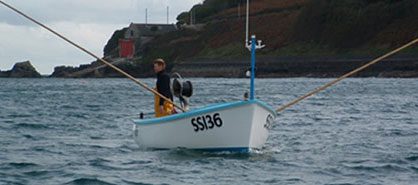14 August 2012
We are wholly opposed to the suggestion that bass should be incorporated into the system of TACs.
Our reasoning is as follows:
- A TAC is an inappropriate instrument for the management of the bass fishery, not least because of the high proportion of catches of bass made by recreational anglers. The evidence suggests that the infrastructure is simply not in place in member states to incorporate catch returns from anglers and significant cost and logistical problems would have to be overcome before this could be achieved; there are therefore significant obstacles to recording accurate catch data and therefore enforcing a TAC and quotas. Given that a TAC is a quantitative restriction, it is a prerequisite that each member state should be able to quantify its total catches with a reasonable degree of certainty. This precondition is not likely to be met for some time and until this infrastructure is in place, in all relevant member states, a TAC for bass should not be attempted
- Alternative management measures are available to ensure that bass stocks continue to be harvested sustainably. These include Minimum Landing Sizes, protection for bass nursery areas, and a ban on pair trawling on spawning aggregations. Given that there are significant uncertainties about whether TACs would bring an appropriate response in terms of reduced fishing mortality, it seems safer to use the instruments that are assessed by ICES as having delivered a positive stock response to date as an alternative to a TAC.
- As constituted, the allocation keys proposed for the distribution of quotas to member states would penalise those member states which have introduced the most far reaching conservation measures for bass (the UK and Ireland), and reward those who have done least. There is no logic and no equity in this approach and it should therefore be resisted.
- It is a matter of public record that catches from the under-10m fleet prior to 2007, were based on more or less haphazard official estimates of catches. The extension of Buyers and Sellers legislation to the under-10m fleet in that year provides for the first time allowed a reasonably accurate picture of bass catches by the whole commercial fleet to emerge. As the reference period suggested for the TAC is 2000-2010, it is abundantly clear that the UK’s catches have been underrepresented. It would be wholly unfair, and completely unacceptable, for UK bass fishermen to be disadvantaged in perpetuity because of deficiencies in historic catch reporting arrangements.
- Many components in the inshore fleet catch bass with varying degrees of dependency. A TAC set on disadvantageous terms for the UK (i.e. on the terms set out in the Commission’s non-paper) would undermine the viability of many inshore fisheries in a range of both predictable and unpredictable ways. Seasonal catches of a high value species like bass can make the difference between viability and business failure across the course of the year.
- Whilst the precautionary approach provides a valuable framework for introducing protective measures before irreversible damage is done; it can, however, be misused and we are of the view that the available evidence suggests that this is a stable stock for which a precautionary measures of the type envisaged would be an over-reaction. It may be that additional measures are required to protect the offshore (spawning) component but this is something that should be undertaken as part of a coherent management plan rather than as a blunt TAC, unpredictable in its outcomes. There is some logic for a higher minimum landing size for recreational anglers.
- Scientific capacity: We have been advised that one of the principal reasons that ICES assessments face significant data deficiencies is that although the raw data is collected, there are insufficient scientific human resources to undertake the analysis necessary to use the data in the assessments. Against this background, it seems perverse to add new TACs when the scientific system is incapable of servicing the current TACs.
- Given the current movement towards CFP reform, it is important that issue of a TAC for bass should be seen against the background of the Commission’s CFP initiatives to reduce and eliminate discards. An impact assessment would be an important part of evaluating the consequences of a TAC in terms of generating a higher level of regulatory discards but our preliminary view is that the evidence suggests that if the Commission’s Proposal is followed, a significant increase in discards would be inevitable.
Conclusion
A TAC for bass would be an inappropriate management response to signs that some components of the bass stock are not as stable as it was a few years ago. Given the shared nature of the stocks, measures at EU level are desirable. The UK has already taken significant steps to protect bass stocks in its waters through a range of conservation measures. This will have significantly reduced the potential catch of bass by the commercial fleet and therefore the UK’s record of catches. At present there is no means of accurately accounting for the significant component of the bass catch taken by recreational anglers. There is therefore no basis for establishing relative stability allocation keys and therefore a TAC on anything like a fair or equitable basis.
On the other hand, alternative conservation measures, more adapted to the bass fishery are available and should be pursued as part of a coherent and comprehensive management plan for bass.

